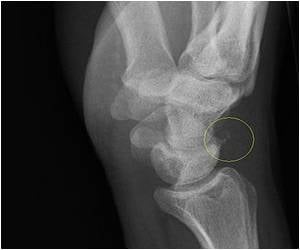Novel therapy that uses a single protein called called mitofusion 2 or Mfn2, which is found in the spinal cord, may delay muscle atrophy in Lou Gehrig's disease, according to a new study at the Case Western Reserve University.

‘A new therapy that is based on a protein found in the spinal cord may be an effective therapy to help delay the symptoms of Lou Gehrig's disease.’





"We found a way to alleviate age and ALS-related muscular atrophy in our mouse models," said Xinglong Wang, PhD, associate professor of pathology at Case Western Reserve University School of Medicine. "Amazingly, we could delay ALS symptom onset by 67 days." Wang led the study in which researchers successfully staved off muscle atrophy and paralysis simply by increasing Mfn2 levels in mouse spinal cords.
Wang and colleagues tested the most widely used ALS mouse model. They genetically engineered the diseased mice to have increased Mfn2 levels--but only in nerve cells that extend from the spinal cord and connect to muscle fibers. In late stages of the disease, mice with high Mfn2 levels in these nerves were a healthy weight, and did not have any of the muscle atrophy, gait abnormalities, or reduced grip strength that mice in control groups developed. Even mice who underwent heavy sciatic nerve damage benefited from elevated Mfn2 levels.
Said Wang, "Upregulation of Mfn2 specifically in nerve cells is sufficient to abolish skeletal muscle loss in ALS and aged mice, despite ALS-causing protein being found in all organs and tissues."
By studying nerve cells collected from the mice, Wang's team uncovered how Mfn2 offers its protective effects. The researchers found Mfn2 coexists with nutrients in cell structures called mitochondria. Their experiments showed mitochondria travel along nerve cell extensions, axons, and deliver the nutrients to the point where nerve cells and muscle fibers meet. This preserves sensitive connections—synapses, between nerve and muscle cells and prevents muscle atrophy. "We found mitochondria function as miniature 'trucks' to transport protein along axons to prevent synaptic degeneration," explained Wang.
Advertisement
Specifically, Wang's team found mitochondria use Mfn2 on their surfaces to carry a nutrient called calpstatin. Calpstatin inhibits harmful enzymes that break down nerves and muscle fibers. With the help of Mfn2, mitochondria carry calpstatin along nerve cells axons to meet muscle cells. There, calpstatin prevents enzymes from destroying delicate synapse connections. But without Mfn2, mitochondria can't carry the nutrient.
Advertisement
The complete study is published in Cell Metabolism.
Source-Eurekalert












